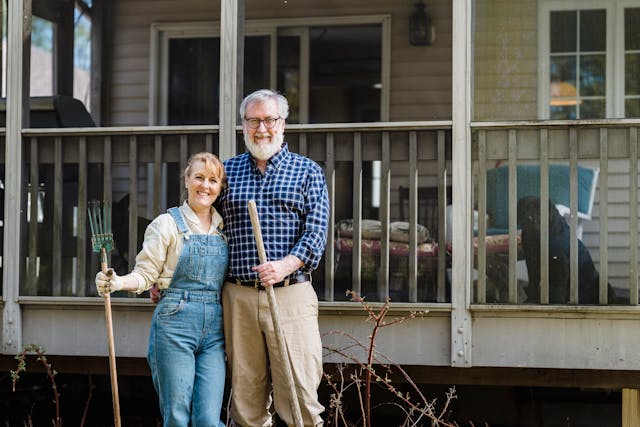
Strategic Aging: The Checklist for Homeowners Over 60
When you pass your sixtieth birthday, it often feels like the years pile up faster than you expect. Suddenly, the house that once accommodated an active household can seem like it’s conspiring against you—stairs feel steeper, that tile in the bathroom feels slippery, and the idea of major repairs is daunting on a fixed income.
Instead of waiting for a tumble on the porch or a leaky roof to force your hand, taking small but thoughtful steps now can make all the difference. This checklist isn’t about big, expensive overhauls; it’s about simple, practical moves to keep your home safe, comfortable, and financially sustainable as you age in place.
Dive in and see which items you can tackle today to ease tomorrow.
Table of Content
1. Make Simple Safety Upgrades
One of the most terrifying thoughts for many of us is losing independence through an accident at home. Start by envisioning yourself with less agility or poorer eyesight: can you walk from bedroom to bathroom without stumbling? As you move from room to room, make a mental note of any potential trip hazards — such as loose throw rugs, uneven thresholds between rooms, cords trailing across floors–loose throw rugs, cords trailing across the floor.
Even an ordinary low coffee table may become dangerous with mobility changes.
Small tweaks to a bathroom, where falls are often experienced, can make an incredible difference. A sturdy grab bar beside both toilet and shower can save lives; for those who dislike industrial-looking bars there are stylish ones that blend into decor seamlessly.
Rubber backed non-slip bath mats should replace slippery ones; consider non-slip tape or adhesive strips instead- they only cost a few dollars and could ease worries over slippery tub floors. In the kitchen move frequently used items down lower cabinets in order to avoid reaching up high or bending too far – by looking critically you might discover several quick fixes that would significantly enhance safety!
2. Explore Home-Equity Options
Your home isn’t just a place to store memories; it’s also a nest egg you’ve built over decades. If you’ve paid down a good chunk of your mortgage or your property has appreciated, you might have more equity than you realize. Rather than selling outright, which can be stressful, consider a reverse mortgage if you’re over sixty-two.
This isn’t a decision to rush: a reverse mortgage lets you convert some of your home equity into cash—either as a lump sum, regular monthly payments, or a line of credit—while still living in your house. You don’t make monthly mortgage payments; instead, the loan balance grows over time and is repaid only when you move out or pass away.
To see if you qualify and how the numbers work, check out the details on reverse mortgage requirements. In many cases, this can be an excellent way to cover healthcare costs, home repairs, or simply add a cushion to your retirement budget. The big caveat is that interest and fees accumulate, and eventually your heirs or estate settle the loan by selling or refinancing the home.
That’s why a chat with a HUD-approved counselor or a trusted financial advisor is vital before signing on the dotted line. They’ll help you weigh the benefits—like tax-free income—against the potential downsides, such as reduced inheritance.
3. Keep Up with Routine Maintenance
If you’ve ever ignored that dripping faucet or thought, “I’ll get to those gutters next month,” you’re far from alone. At sixty, however, dealing with sudden, large-scale repairs can be particularly stressful—both emotionally and financially. The remedy is a simple maintenance routine that spreads minor tasks across the whole year, so they never become major emergencies.
Consider a checklist organized by season. In spring, clear leaves and debris from gutters and check your roof for loose shingles. That tiny hole up there can turn into a thousand-dollar problem by the time winter rains arrive. When autumn rolls around, have your heater serviced, seal any drafts around windows and doors, and test smoke and carbon monoxide detectors.
In summer, trim overhanging branches that threaten to fall and check window screens for rust or tears. Winter often means monitoring indoor humidity levels—too much moisture breeds mold, while too little cracks wood and skin.
Many towns offer discounted or free home-inspection services for seniors, so take advantage if it’s available. Fixing a loose handrail or patching a minor foundation crack now can save you from an unexpected crisis fund drain later.
4. Adapt Spaces for Comfort and Independence
The moment when going up or down stairs becomes an ordeal is the moment to rethink how you use your home. If all your essentials—bedroom, bathroom, kitchen—are on upper floors, moving just one of these spaces downstairs can simplify daily life. A main-floor bedroom means no more late-night treks up and down the stairs.
If remodeling the kitchen sounds daunting, start with smaller tweaks: replace door knobs with lever handles, install pull-out shelves, and add LED strips under upper cabinets to brighten workspaces.
Bathrooms are another critical area. Even if you’re nimble now, a walk-in shower or a low-threshold entry can prevent future accidents. Remodeling might be pricey, so you can also look into portable, standalone shower benches or fold-down seats that attach to existing walls. And install a handheld showerhead—you’d be surprised how much easier that makes bathing when bending is a challenge.
Entryways deserve a quick look too. A single step up to the front door can become a serious barrier down the road. A small ramp or even a sloped wooden threshold can smooth the transition. Over time, each of these adjustments adds up to a home that flexes with you rather than against you.
5. Sort Out Legal and Medical Paperwork
Once your home is equipped to support you physically and financially, the next big step should be ensuring your wishes are documented for any eventualities in the future. Draft a durable power of attorney for both financial and healthcare matters to name someone to make decisions on your behalf in case you become incapable; without it, family may need to go through lengthy court proceedings for guardianship of you which can take months and cost thousands in fees and damages.
Once again, create or update a will or living trust to outline how you want your assets distributed. Otherwise, intestacy laws might determine who inherits which may not reflect your personal wishes. Furthermore, an advance healthcare directive (often known as living wills) outlines your preferences regarding life-sustaining treatments or pain management if they can no longer communicate them later on. Share these documents with chosen agents, doctors and close family members so they all understand your intentions.
Once again, double-check beneficiary designations on retirement accounts and life insurance policies. Failing to do this after divorce or the birth of grandchildren could create unnecessary headaches or legal disputes later on; by sorting these items now you will spare your loved ones any confusion and ensure that your intentions are respected exactly as intended.
Wrap Up
Aging in place is more than a catchphrase–it’s an intentional practice designed to ensure your environment, finances and legal safeguards meet your changing needs as you age in place. Tackle each element step by step – once finished you’ll have peace of mind knowing your home will continue providing comfort rather than concern for many years to come!


